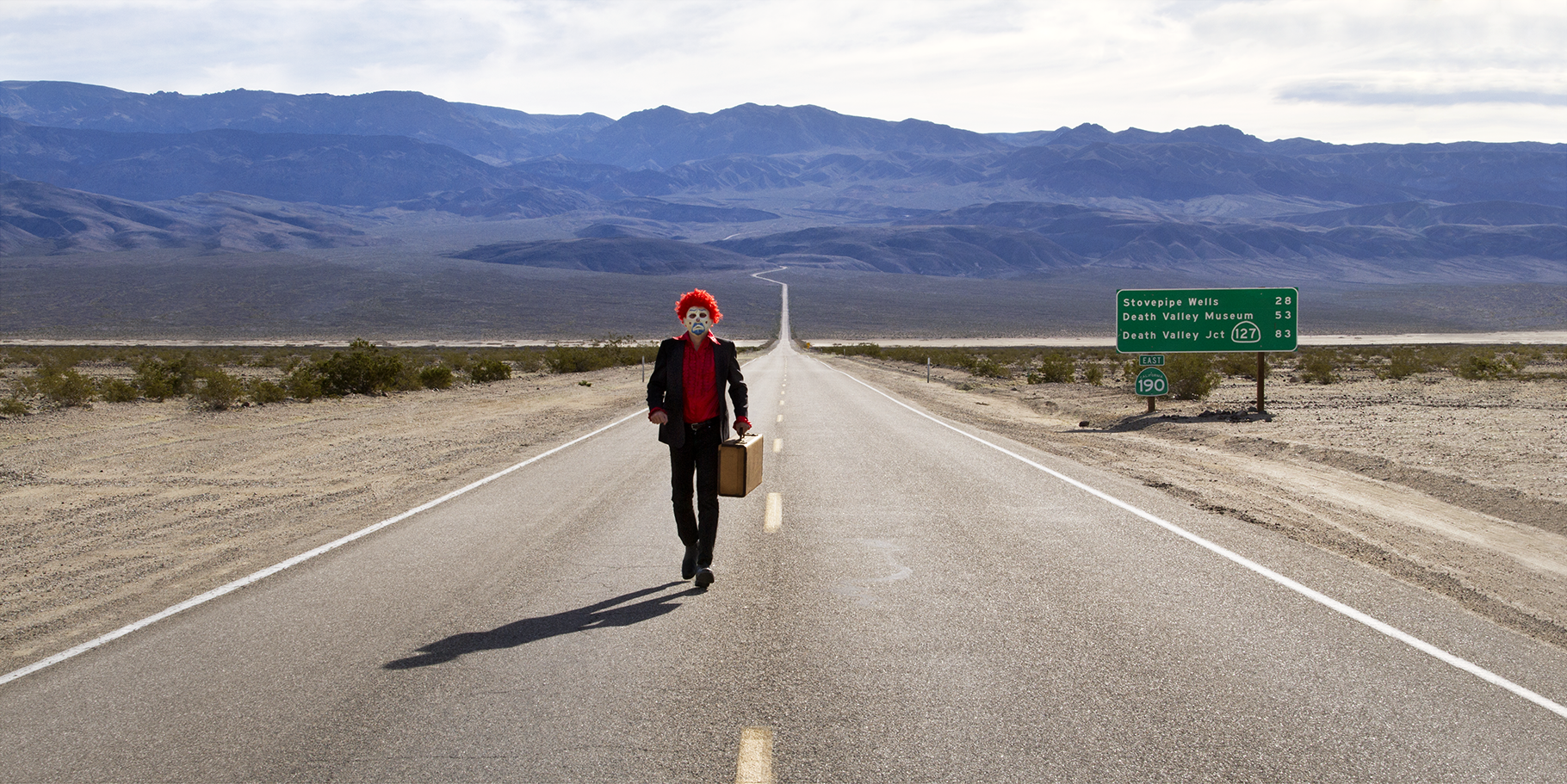ERIC CUNG
PEOPLEText: Victor Moreno
Please tell me a bit more about the concept you came up with.
Part of this is a social commentary on what I like to call “selfie-tourism”. Have you ever noticed how we all as tourists travel the world just to experience a place through a selfie? But that’s not just it. I’ve also travelled with professional photographers who only experienced new places through the viewfinder, refusing to put the camera aside for a moment, to pause, breathe in the air and enjoy a fantastic view. It’s a weird kind of traveling where you’re not truly enjoying the journey.

Death Valley, 2011 © Eric Cung
How do you think people might interpret this character in your pictures?
I think the pictures stand on their own merit. That’s also the reaction I’ve gotten from people who have seen them. They are powerful as they are. That’s why I choose the clown character. He’s used to be part of a family, the circus. If you take any of the circus characters outside of this close-knit world, they would be out of place. It becomes a bit surreal but that’s okay. By putting something that is so out of context in a different milieu, you create an intriguing contrast.
What does this character represent?
I think because he’s been thrown out, he is an outcast. He is searching for something, traveling the world searching for something. Also remember, the clown figure, or the joker, was the only one who could tell the king the truth without being killed. Maybe he is telling you something you don’t really want to hear?

Stranded, 2013 © Eric Cung
How important for you is to achieve a visually striking “staged photography” result, and how important is the big format to amplify this effect?
Paradoxically, I actually want the pictures to be able to work in small formats. That’s why I simplify them to their bare essence with just the landscape and the character. That’s it. So if you view them in a miniature format, you can still quickly see what they depict. But of course the most striking effect is when you make them bigger, see all the details, the super-high quality and wide-open vistas. If you buy one of the art prints, you’ll discover details in the landscape that add to the richness of the experience. Again, I think the photos works in small formats, too, because they are simplified. But when you blow them up there are many details that, together, enhance the overall experience.
Is it unusual to use digital photography for this type of fine-art concept?
No, digital is pretty common these days. Even fine-art photographers like Gregory Crewdson, who you’d normally associate with large-format 8 x 10 analog, work with digital images. Why? Because it’s impossible to reach this level of quality and detail with analog photography – even if you can certainly apply analog thinking and techniques. Take the Lumière brothers, for example, who in the late 19th century, used special effects in their films and photos. Or even Joseph Stalin, who manipulated images, airbrushing out opponents. I can understand that people are nostalgic about analog photography. There’s a certain quality to it.
Read more ...




